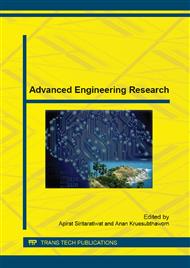p.129
p.133
p.137
p.141
p.145
p.151
p.155
p.160
p.164
Android Antivirus Scanner by Analyzing Operation Codes
Abstract:
This research presents a model for malware detection on mobile operating system based on analyzing the operation codes. The research processes are as follows: (1) achieving of both malicious and benign codes on android operating system, (2) extracting features based on the distribution of n-grams frequency where the parameter n = 3 is used, and (3) constructing a model for classification the malicious codes using the extracted features for both malicious and benign codes. In the experiment, 304 malicious codes and 553 benign codes were using to construct the model. The experiment shows that the model achieved more than 85.52% accuracy. For the sensitivity and specificity, the model achieved 71.26% and 90.52%, respectively.
Info:
Periodical:
Pages:
145-148
Citation:
Online since:
August 2015
Price:
Сopyright:
© 2015 Trans Tech Publications Ltd. All Rights Reserved
Share:
Citation:


